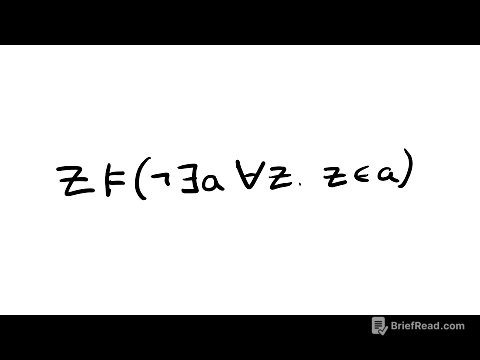TLDR;
This YouTube video provides a detailed scalping strategy focused on the H1 timeframe, emphasizing precision, timing, and understanding market structure. The strategy revolves around tracking H1 candle movements, identifying manipulation, and capitalizing on liquidity sweeps during specific time windows. The video also covers entry models, risk management, and validation criteria to filter out low-probability trades.
- Focus on scalping the H1 timeframe using specific models.
- Trade only during the last and first 10 minutes of each hour.
- Track H1 candle continuations and reversals.
- Use order blocks, breaker blocks, and inversion fair value gaps for entries.
- Implement validation criteria to filter trades.
Intro [0:00]
The video introduces a straightforward scalping strategy that focuses on specific models and precise execution. The mentor emphasizes a direct approach, avoiding unnecessary complexities and focusing on actionable techniques. The core of the mentorship is to teach how to identify and trade specific market models for consistent profitability.
H1 Scalping Model: Continuation Pattern [0:30]
The primary strategy involves scalping the H1 timeframe, focusing on the continuation pattern. This pattern is identified when a price closes above the previous candle's high on the H1 chart. The likelihood of the price taking out the high of the up wick is about 80%. This is because algorithms and institutions position themselves based on how the candle closes. Bullish candles above the opening price often lead to traders exiting positions at the high, creating liquidity at the up wick. The goal is to target this liquidity at the end of each hour. Mastering this continuation setup is crucial before moving on to reversal patterns.
Trading Timeframes: Last and First 10 Minutes of the Hour [3:44]
Trades should only be executed during the last 10 and first 10 minutes of each hour. This is when macro events, liquidity sweeps, and manipulations occur, providing the necessary fuel for price to move towards the targeted high. This timeframe is applicable across different sessions, including London and Asian sessions, and even Bitcoin, but the mentor prefers trading NQ during the New York session due to its volatility and high probability of up wick or down wick breakouts. The win rate is around 78-80% when these parameters are followed. The Next Micro Kill Zone indicator can help identify when these sweeps are likely to happen, preventing trading during chop.
Manipulation Models: Premature vs. After-Close Entries [6:29]
There are two main manipulation models to consider. The first involves manipulation in the last 10 minutes of the hour (50 to 00), requiring a premature entry before the candle closes. The second involves manipulation in the first 10 minutes of the hour (00 to 10), requiring entry after the candle closes. The goal is always to target the high on the H1 chart, looking for manipulation to happen in either the first or last 10 minutes.
Tracking H1 Candles: Trading Below Previous Lows [12:56]
To track H1 candles, if the price closes below the previous candle's low, the target is the low of the same candle that closed below the previous low. During the transition between the closing of one H1 candle and the opening of a new one, the goal is to capitalize on this move. The likelihood of the price targeting this low can be determined by observing the first and last 10 minutes of each hour. This low represents liquidity, where many traders have buy limit orders. Scaling down to the one-minute chart, look for a sweep of liquidity, which is the opposite of typical ICT trading strategies. Enter opposite to the 2022 model, as the H1 candle closing suggests an 80% chance of the low being targeted.
Entry Models: Order Blocks, Inversion Fair Value Gaps, and Breaker Blocks [17:35]
For entries, focus on order blocks, inversion fair value gaps, and breaker blocks. An order block is formed when price breaks structure, creating a high, low, and higher high. The zone that should hold to create a new high is the order block. An inversion fair value gap occurs when a bearish fair value gap is disrespected, turning it into support. A breaker block is a failed order block, where a bullish order block is disrespected, turning it bearish. The strategy involves waiting for signs of weakness to target lows, looking for price to break lows and reject highs.
H1 Candle Validation Criteria [35:58]
Several validation criteria should be considered before taking a trade. First, avoid trades that reject higher timeframe liquidity. Second, avoid trades with opposite structure. Third, avoid lunch trades (11:50 to 12:10) due to low liquidity. Fourth, ensure an aggressive candle closure with volume in the body. Finally, the high or low being targeted should be formed after :42 of the hour. This is because bullish candles can form in two ways: opening low and creating an up wick, or opening high and pushing up at the close. The high should be formed after :42 to avoid bearish distribution.
Backtesting and Journaling [1:09:52]
Backtesting and journaling are essential for mastering this strategy. Mark out when the high was formed (:42, :45, :46), and document the H1 candle's characteristics, such as opposite structure, rejection of highs, and candle volume. On the one-minute chart, note the time of highs and lows, the entry structure (breaker, inversion, order block), and the time it took to hit the draw. Also, track whether ES took out the draw before NQ and if there were any SMTs. Consistent journaling will build confidence and improve trading performance.








